Wandering The Alberta Central Railway Museum
Out near Wetaskiwin Alberta there’s a wonderful attraction you and the family can visit, home to a collection of vintage train equipment…and who doesn’t like that stuff? Drop in, say hi, explore the grounds, go for a ride around the loop and make it part of a grand day. On this end, it’s the Wetaskiwin Station, over there an ancient grain elevator, the tallest thing around, and all about the property old rail cars of every type and description. There’s just so much to take in.
We’re talking about the Alberta Central Railway Museum, on a crossroads southeast of town, run by a dedicated group working to preserve history, and who are always at your disposal. It’s an intimate little place, but by no means lacking in things to see. We sure were shown a good time. Come with us, as we often say, and take a tour of the “ACRM” that I think you’ll enjoy, to see what’s to be found there, then plan a visit for yourself.
The Team actually visited twice. Displeased with most of the first set of pics, we made a return some months later. Like that was a problem (heck we’d love to come back a third time).
Ready? Let’s go!
1) Arrival! And the fun and adventure’s about to begin. Here, the first things seen on arriving at the Museum, their late 1950s “RS-23” and a 1970s era “Fishbowl” Transit Bus. More about both soon!
2) A quick walk-about the ACRM to get the lay of the land before we get down to business. Seen here, it’s a section of loop track (make sure to ride the train when you come), a selection of speeder cars (used by maintenance crews to get around) and an interlocking tower. The latter could be found, in the old days that is, at important junctions and terminals and controlled the routing of trains.
3) This bus (#745) came from Medicine Hat Alberta, and dates back to 1974. It’s a GMC “Fishbowl”, a nick name given account it’s angular front window which gave a sort of distorted fishbowl-like view on looking out. Or maybe it was because all that expanse of glass made it feel as though one were in a fishbowl – we’ve heard both. This was a very popular transit bus of the 1960s-1980s era. Some lasted in service into the 2010s (see: They Live! Calgary Transit GMC Fishbowls in 2013. Fishbowl buses were made in both the US and Canada. This example was retired around 1990 and is a less common 35 foot model (most we’re 40 feet). GMC officially called the model “New Look”. Seen in back, an “RDC” car.
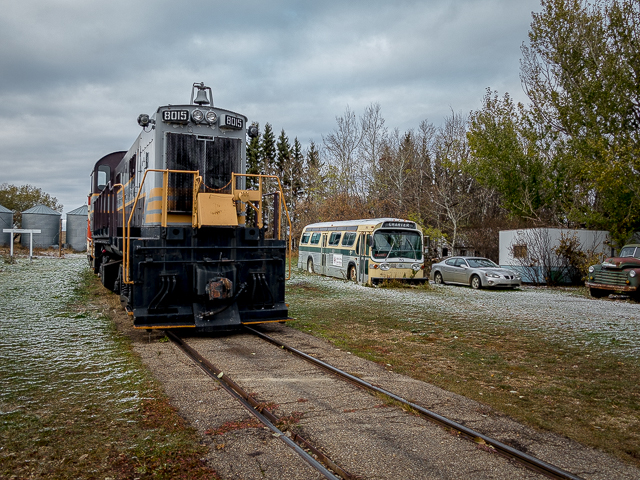
1) At the Alberta Central Railway Museum.
4) This caboose (#437361) dates from the late 1940s and was built at the CPR’s sprawling Angus Shops in Montreal.
5) The Canadian Pacific Railway used to own tens of thousands of these plain forty foot boxcars. This one, #21720, dates from 1954, is classed “XM” for general service and came from maker National Steel Car Company, Hamilton Ontario. NSC was one of many rail car makers in the country back then, but today is the last one. They sometimes call that the Pacman logo, but officially it’s the CPR “Multimark” deigned in the 1960s.
6) Up to the the late 1980s, one could expect to find a caboose at the tail end of every train. And while there’s still the occasional use for them on the railway for special applications, most today seem to reside in museums and such. This one dates from 1975 (#434546) and like the older one seen earlier came from Angus Shops. Angus was mainly a repair centre but could be counted on to build rail cars of all types and even steam locomotives from time to time. In back, a towering building we’ll be giving a lot of attention to.
7) This ancient snow plow (CPR #400766) is from 1913 and was for clearing tracks of deep snow drifts and accumulations. It too came from Angus. This facility, the largest shops on the entire CPR system, operated in the years 1904-1992, the land it sat upon since redeveloped. There’s still a few snow plows still in service by the railways, all of them ancient like this one, but most have been retired. Today they typically battle snow accumulations with locomotive equipped plows (and the more frequent trains) and sometimes heavy machinery like cats and loaders. Ahead, the tender from a “Jubilee” Class Steam Locomotive (circa 1930s). Tenders held both water and fuel.
8-9) CPR dining car Wallingford from 1921, built at Angus, using kits supplied by a commercial rail car maker (Canadian Car & Foundry, also in Montreal). And next, a model in one eighth scale under construction, of the exact same car.
10) Out the back door of a third caboose, a look at “Mount Avalanche”. It was commonplace to name passenger cars.
11) Right, CPR sleeping car Val David (CC&F/Angus) from 1921 and from 1947 it’s a Mail/Express car, #3623 (also CC&F/Angus). The latter looks very much like a baggage car, but would be for carrying letters and parcels for the post office, and stuff travelling by the railway’s own expedited package delivery network. The railways did a kind of FedEx thing back then.
12) A ditch light. With one on each side, mounted down low, these would help supplement the main headlight.
13) On display, this here model train layout. I swear if we had the room (and money, and time), we’d be building one ourselves.
14) Two cars of different eras, left this former CPR sleeping car Mount Avalanche (CC&F/Angus) from 1926 and right a former CPR Budd “Rail Diesel Car” (or RDC, circa 1956, #9108). These are pulled by the locomotive seen earlier and take visitors on a tour around the property. RDCs normally are self propelled, but there’s a mechanical affliction that keeps this one from functioning so. Parts are being searched out so perhaps one day it can run on its own.
15) Locomotive builder plates. The top example comes from maker Canadian Locomotive Company, Kingston Ontario, for a time a division of the Fairbanks Morse Company in the US. Third plate down is from General Motors Diesel Division of London Ontario (interestingly the GMDD factory also made that bus seen earlier) and lastly a plate from Dominion Engineering, who made “Alco” engines used by the Montreal Locomotive Works. All these factories are closed – CLC operated circa 1850s-1960s, GMDD 1950-2012 and MLW early-1900s-1980s.
16) Little detail shots are a Connie thing.
17) Looking down to the Wetaskiwin Station.
18) Number boards and bells and lights…
19) Just like the horn on your car, only waaaaaaay louder. In fact, this close, they’re deafening.
20) The train waiting for opening day at the Alberta Central Railway Museum (which happens May Long Weekend). The engine is in old “Canadian Pacific” paint which predates the present day “action red”.
21) In the old days, long distance cross country communication was often by telegraph. Not only was the network used for company business, but the general public could also rely on it for the sending of urgent messages to folks far away. Here’s the operator’s station. Bill Wilson, the driving force behind the ACRM, is also an expert “telegrapher” and will put on a show for you.
22) Where roads and rails meet, it’s these “crossbucks”. Ones like this, lacking lights or gates, would be found at lesser used crossings.
23) Yellow’s become a trademark. If we’re seen without our company colours in a photo, we hear about it from our readers, so here you go.
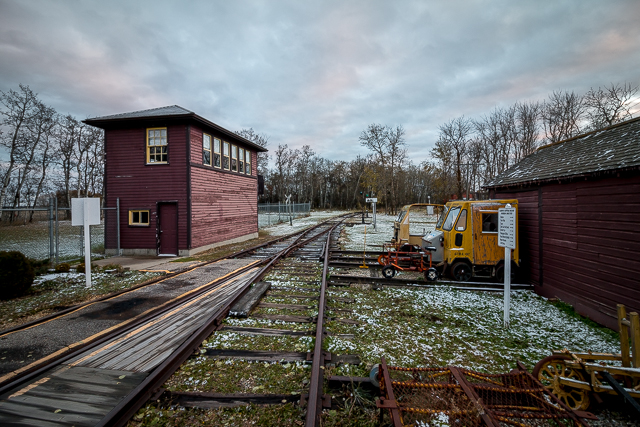
2) Down the tracks…
24-25) Inside Mount Avalanche and the Budd RDC car. Grab a seat and enjoy the ride.
26) Here’s a one eighth scale locomotive under construction. It’ll be used to pull a string of passenger cars that you can ride on, at Iron Horse Park in Airdrie Alberta. Little Wallingford seen earlier is part of this train.
27) Displays and artifacts. So much to see and learn here.
28) The CPR honours those who served. “…See to it that their names be not forgotten.”
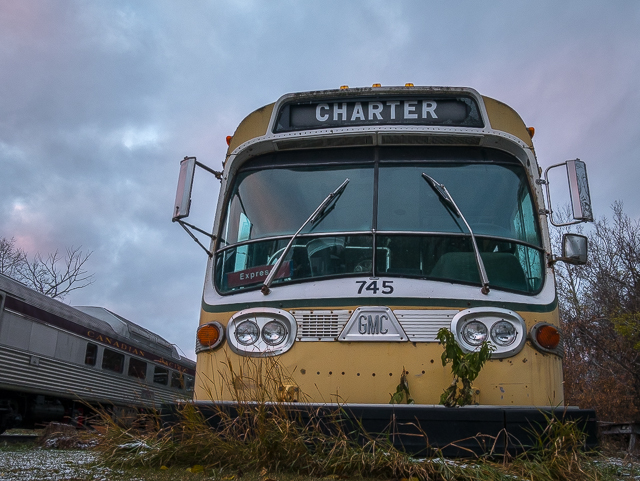
3) Ex-Medicine Hat Transit.
29) Rosebriar School, from 1895, predates the formation of Alberta (in 1905). When built the school was in the North-West Territories. This is a typical one roomer, one of thousands that once dotted the prairies, that was moved in from a cross-road not far away.
30) A prairie skyscraper, with nothing taller for miles around and in front lengths of rail.
31) On a siding this row of vintage rail cars. More details in a moment. And with the sun dropping, a promise of some nice colours in the sky.
32) This curious machine is used for track maintenance. The park has a balloon track, some kilometre and a half long and trains you can ride are operated most days.
33) From 1923, #3552, another ex-CPR Mail/Express Car (CC&F/Angus). And that glow from the sunset. CC&F, incidentally, was once a giant of Canadian Industry and until closing in the 1960s, manufactured freight and passenger cars, transit buses, aircraft and a whole host of other things.
34) That stencil tells us this flat car (CPR #300641) was built in August 1938. The well lit underside affords us a good look at the bogie (truck) details. Flaps at the axle ends allowed oil to be added to the wheel bearings. Modern “roller bearings”, seen on the car ahead, replaced “friction bearings” in the 1960s, and required far less maintenance and were safer – a friction bearing could if run dry could fail spectacularly, often culminating in a derailment.
35) The elevator came in from the nearby community of Hobbema (now called Maskwacis). More history on it in coming photos. Old telegraph poles add an air of authenticity. The view over that same flat car. Covered Hopper ahead is a relative youngster having been made in 1970.
36-37) Drop a letter in this rolling mail box. This car, as you can see, is built like a tank. The paint’s peeling, a bit of rust has taken hold, but it’s still a thing of beauty and as solid when built, in spite of it all.
38) The blue/green tells us the elevator last belonged to the Alberta Wheat Pool, traditionally the largest grain handling firm in the province, that via a merger ceased to be in the 1990s. An old rail pokes out of the ground.
39) The tank car (#17450) dates from 1937 and was built by American Car & Foundry for the Union Tank Car Line. Left, a second plain old box car, CPR #52717, is a product of CC&F from 1956. Lastly, the ore car on right, ex-CPR #377200, comes from maker Eastern Car Company of Trenton Nova Scotia. This plant, under various names and owners, made rail cars up to 2007.
40) Bogie details. Nothing lightweight here!
41) An equipment trust plate. This tells us this rail car was financed by a third party. It was not odd for railways to do this…spread the payments out, just like you’d do with an auto loan.
42) This building is one of a handful of pre-1910 grain elevators in the province. Foreground, the cutting edge business end of the snow plow seen earlier.
43) The McCormick-Deering (sometimes simply McCormick) W-9 was manufactured by International Harvester Corp in the 1940s/1950s and looking at the production numbers was a popular model.
44) Built in 1906, the elevator was moved here in the early 2000s (the museum itself dates back to the 1990s). Originally owned by the Alberta Grain Company, it went through a series of owners throughout its history, including Alberta Pacific Grain, Federal Grain, the Alberta Wheat Pool and finally Agricore and Agricore United. Where it stood in (then) Hobbema Alberta, it was one of several grain elevators there. In the soft light of evening.
45) The town’s name was always proudly displayed. The “No #2” tells us the owner (the Pool) had more than one elevator in town and the arrow reminds rail crew which side to spot empty cars, always up of the arrow in this case. Sidings had a slight grade, so cars could be “rolled” away after being filled so a new one could take its place.
46) A whistle post could be found at road crossings and places of restricted clearance, and instructed train crews to blow a warning to announce their approach. This one’s particularly elegant on form.
47) The controls of a speeder. The team took a ride across Saskatchewan in one like this. See: Riding the Rails in SW Saskatchewan – Part One and Riding the Rails in SW Saskatchewan – Part Two. It was FREAKING awesome!
48) Semaphores in the old days were used as a form of traffic control. Today they used lighted signals. The position of the blades indicates that the train is to come to a stop.
49) If we see old metal, we shoot old metal. Here’s a couple old beasties in retirement.
50-51) Another caboose, ex-CPR, built at Angus in 1971. Painted a shade of purple, it almost appears monochrome in the failing light. In the distance the howl of coyotes.
52) “Dayliner” is what the CPR called their Budd RDC cars. These were used on lesser patronized runs and while they could be connected together in groups of two or more, they usually operated alone. They’re capable of high speeds, 140kph+, if needed. Talk about a real sprinter! Constructed of stainless steel, they’re near indestructible…and they’re blinding in bright light.
53) Here, a faithful scaled down reproduction of the circa 1907 Wetaskiwin Railway Station. The real one still exists in that nearby town. The building includes a waiting room, ticket and telegraph office, baggage room, and upstairs would have been accommodations for the station agent. The arched dormer is a unique feature. The semaphore pole developed a lean, which they plan to fix. Baggage wagons would be a train station fixture. Inside, there’s various displays to take in.
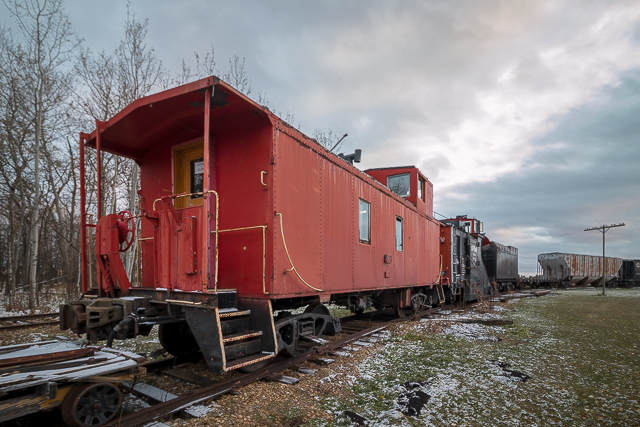
4) From the 1940s.
54) And lastly (it’s been another long one) the locomotive seen at the beginning, which powers the loop train. This is a Montreal Locomotive Works RS-23, ex-CPR #8015, best suited for branch line work and a comparative “lightweight”, coming in at about ninety tons (many of the class were heavier), verses up to two hundred plus tons for modern locomotives. MLW had ties with the American Locomotive Company (Alco) and in fact outlived its once parent firm by some fifteen years before closing in the mid-1980s. Unit #8015 (and other lightweight RS23s, so series #8013-#8018) operated on spindly-railed branch lines in Saskatchewan before being retired in the 1990s. To see sister unit #8017 go here: Gas Plant Collection.
So kind of them to light up the locomotive like that.
And with this final photo, the tour is over. I know…and we were just getting into it. We documented a lot at the Alberta Central Railway Museum, but not all. Now come see for yourself. Spend the day, take in the collection and exhibits, enjoy a train ride and snap some cool photos. And share them with the Team. The cost of admission is a pittance – almost free in fact. These funds help with operating expenses and upkeep, but it’s a big uphill battle, so donate a few extra dollars when you can. You can help preserve history.
If you plan on visiting…
Location: SE of Wetaskiwin, off highway #822, on Range Road #234 north of Township #452. There’s signs to mark the way. And once you see the elevator, there in the distance, you know you’ve arrived. Their website: Alberta Central Railway Museum.
Tell them we sent you!
More trains!
Wandering the Alberta Railway Museum – a similar name and a huge collection.
The Railway – a day on the short line.
Aspen Crossing’s new locomotive gets delivered – it moves…by truck!
If you wish more information on what you’ve seen here, by all means contact us!
Date: October, 2018/May, 2019
Location: Near Wetaskiwin Alberta
Article references and thanks: Bill Wilson @ Alberta Central Railway Museum, Canadian Trackside Guides, Nakina.net.
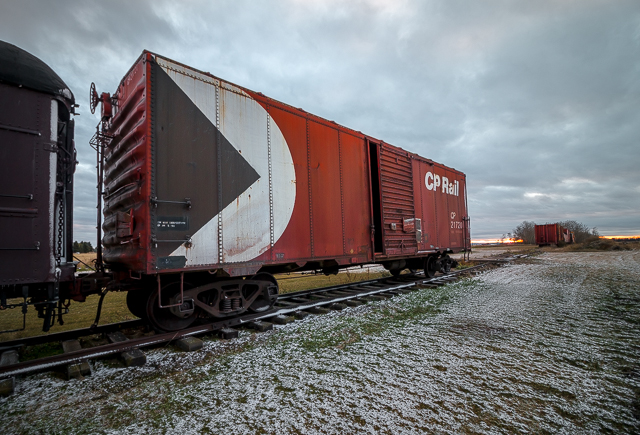
5) The once ubiquitous forty foot boxcar.
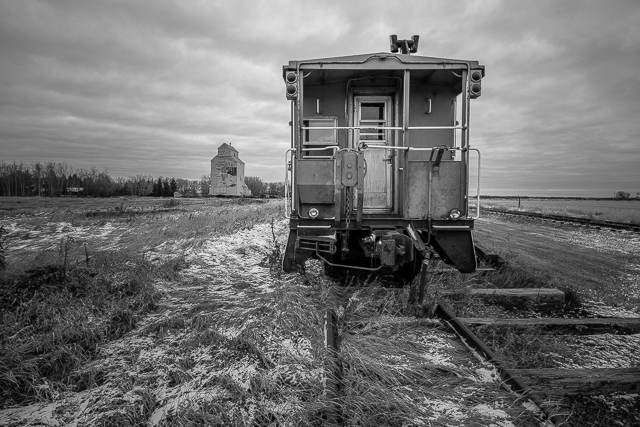
6) Formerly on the end of every train.
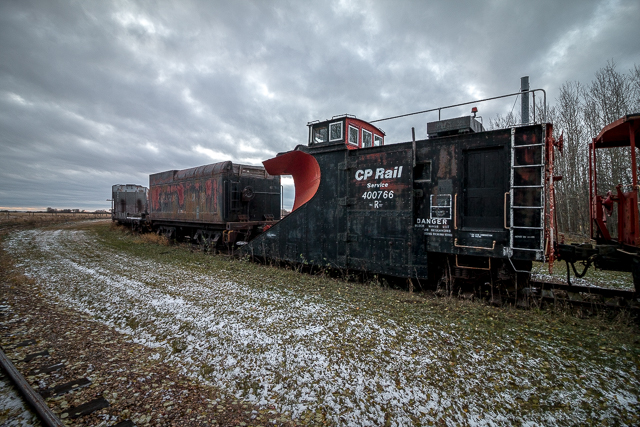
7) One heck of a snow clearing machine.
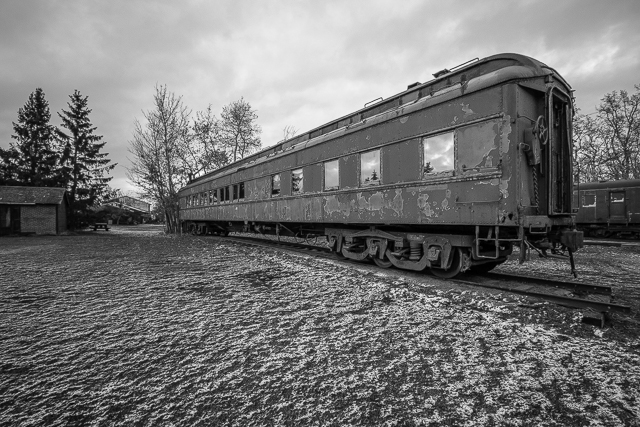
8) Full size…
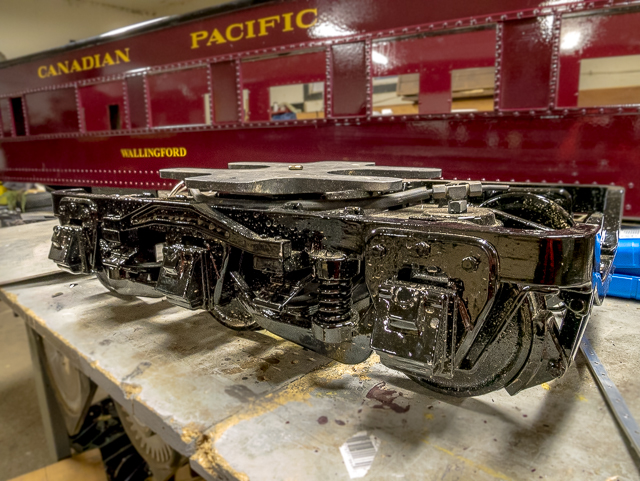
9) …And one eighth the size.
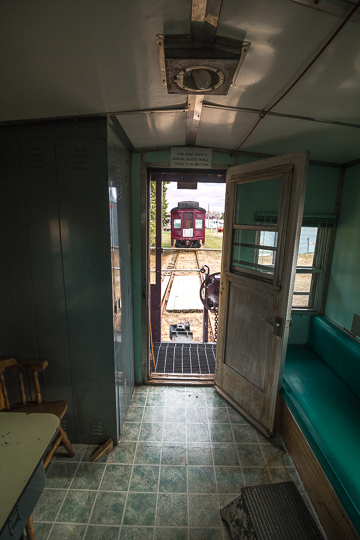
10) Out the back door…
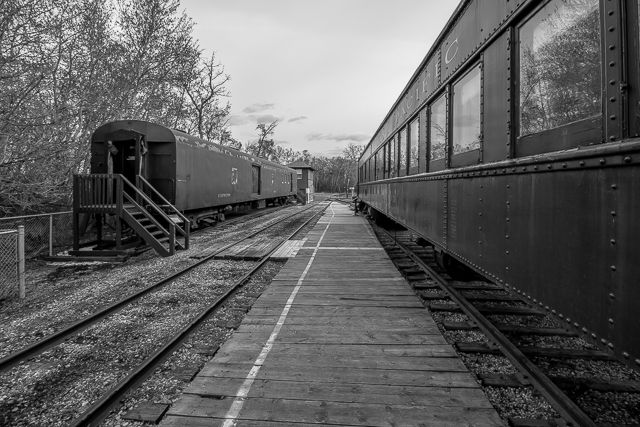
11) A place to sleep and for mail and express.
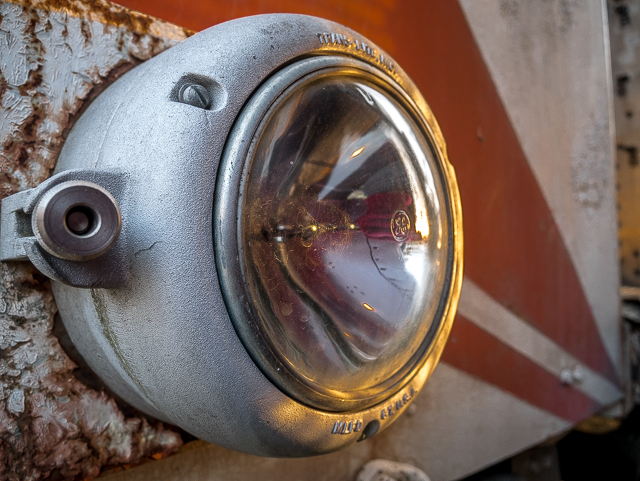
12) To light the way.
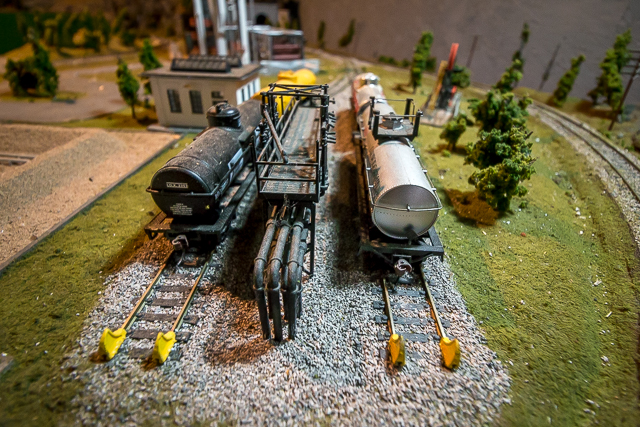
13) If we only had the room…
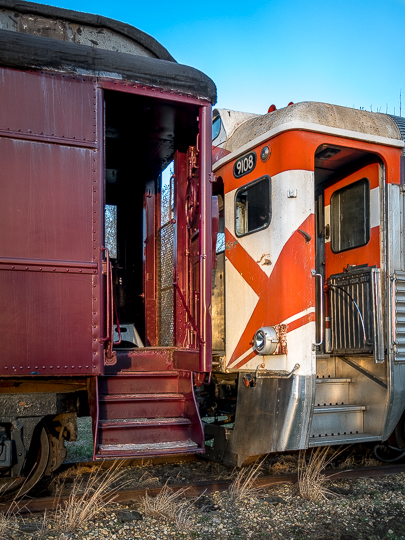
14) Hop on and go for a ride.
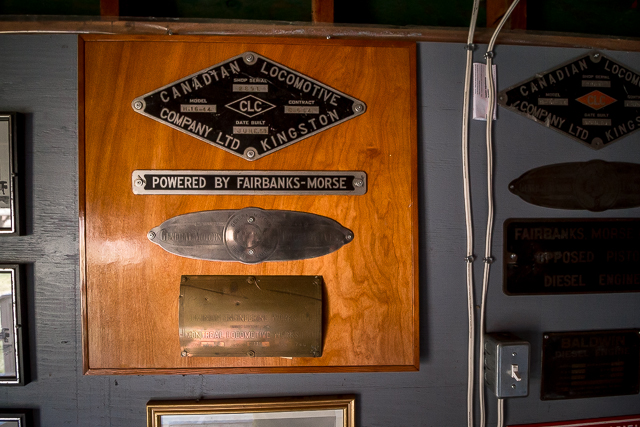
15) Builder’s plates.
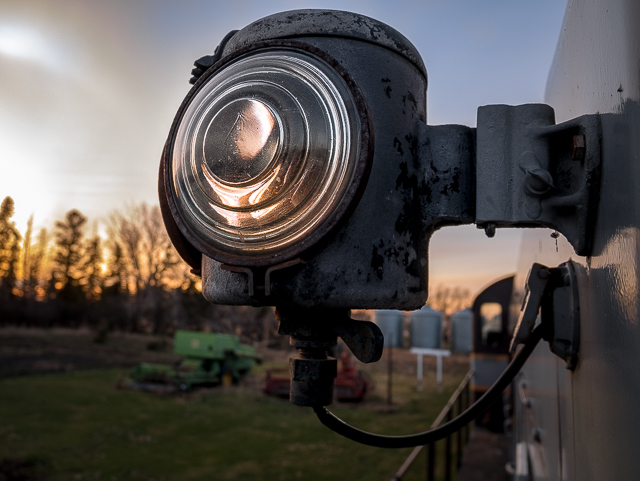
16) Little details.
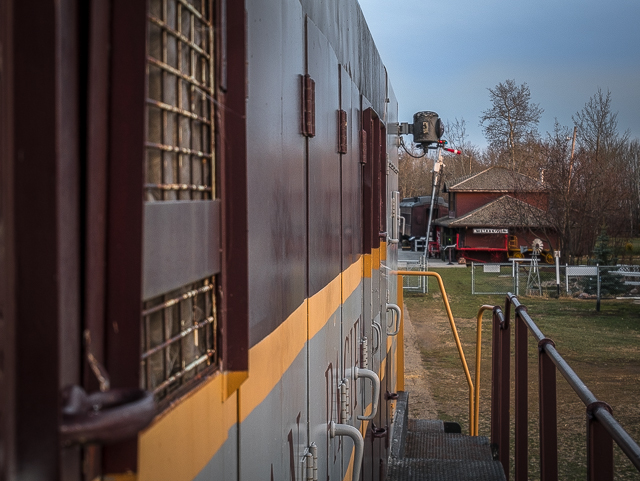
17) The view ahead.
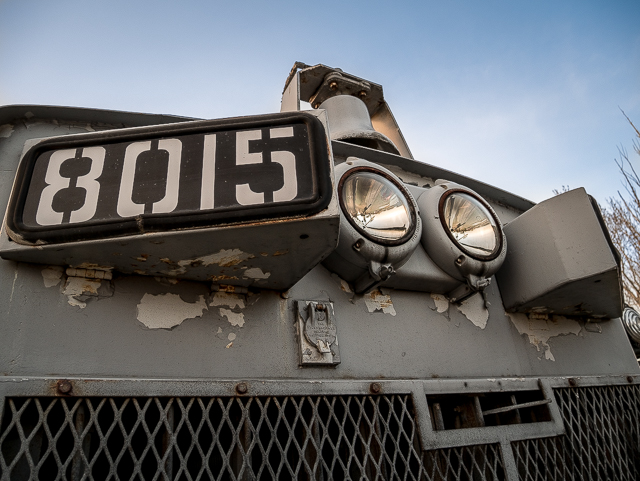
18) #8015 is an ex-CPR locomotive.
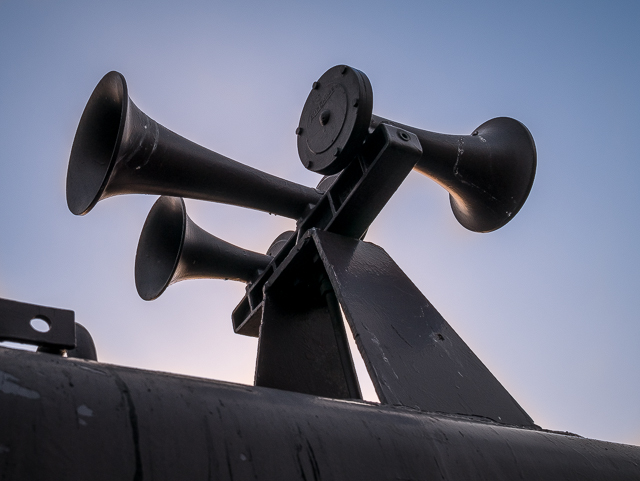
19) To warn of approach.
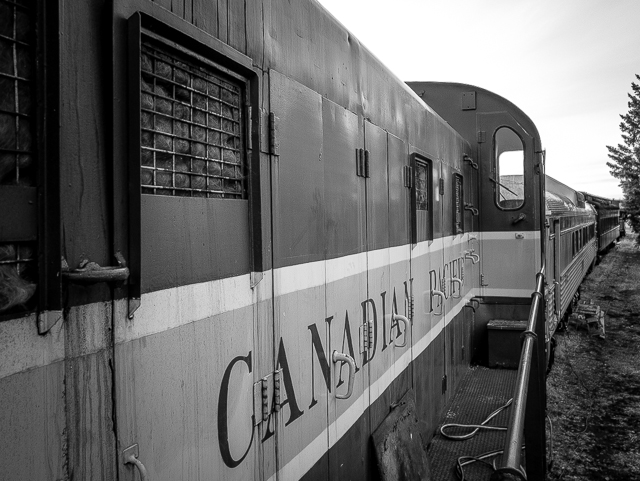
20) In old Canadian Pacific paint.
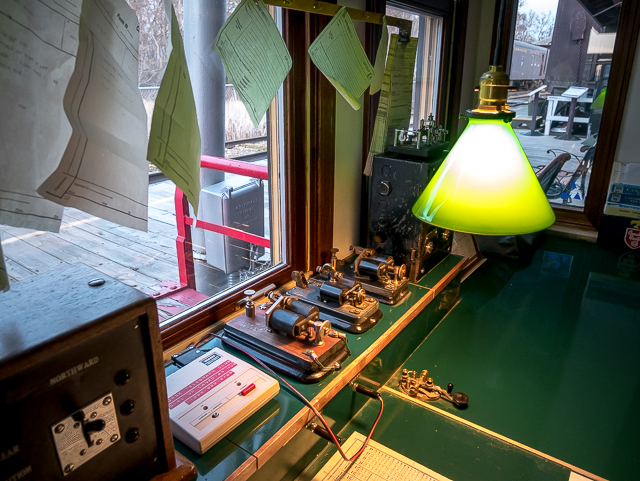
21) At the telegraph office.
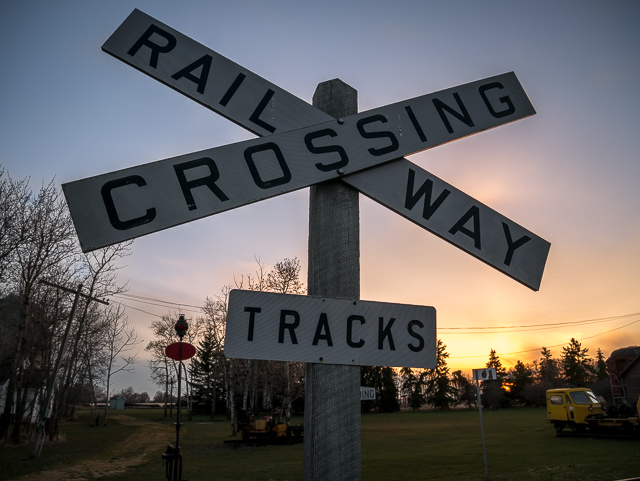
22) Stop, look and listen.
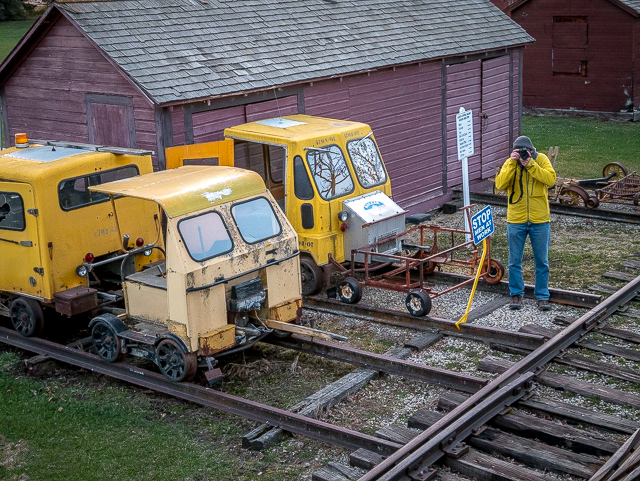
23) Yellow’s a theme.
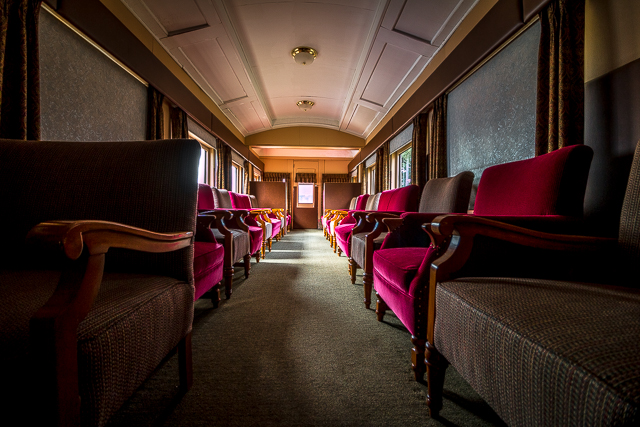
24) Inside Mount Avalanche.
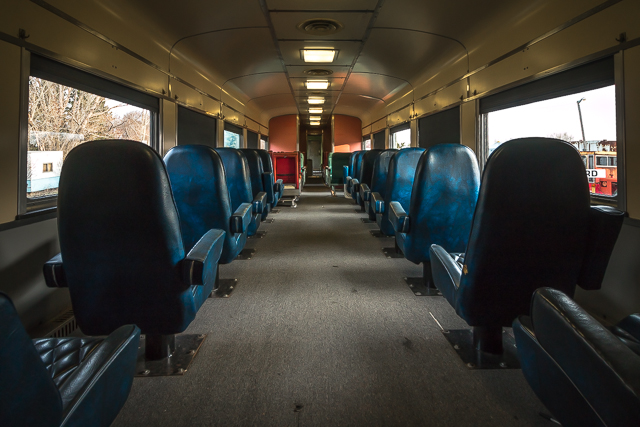
25) “Budd” interior.
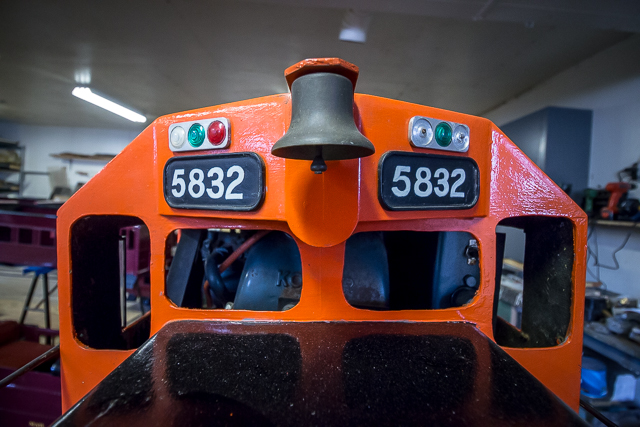
26) Being built.
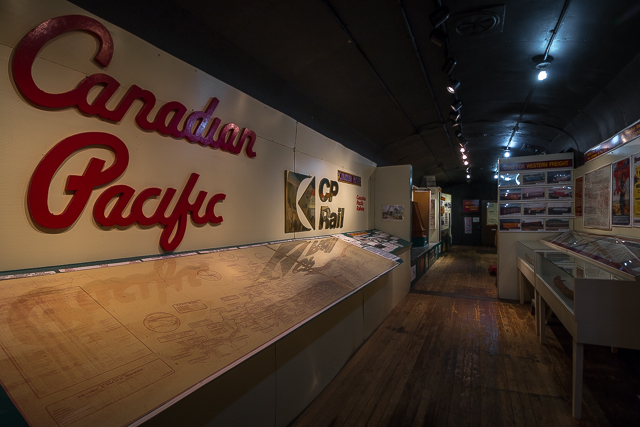
27) On display.
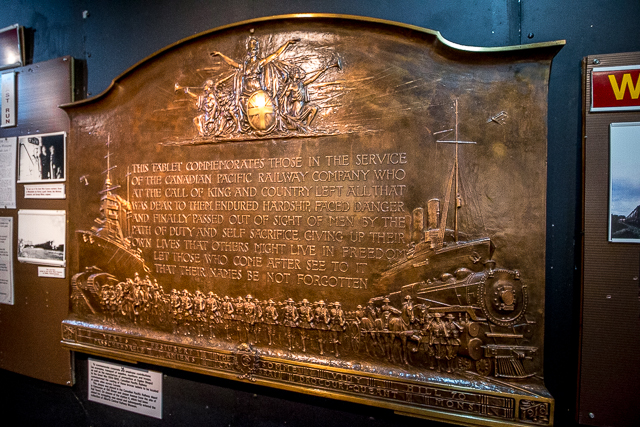
28) A tribute to those who served.
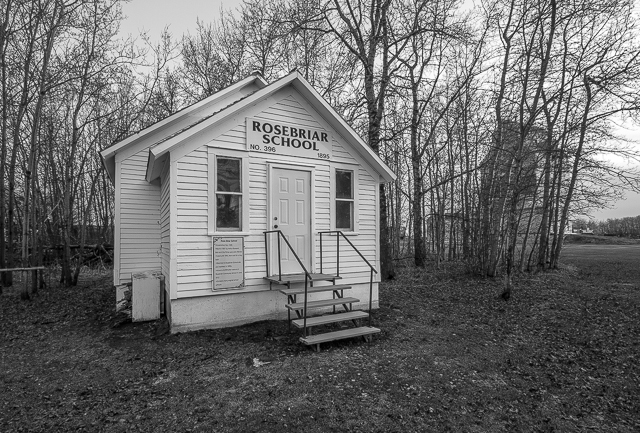
29) Built before Alberta was even a province.
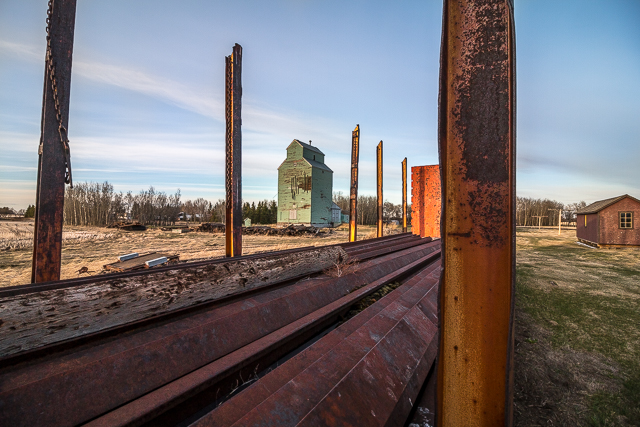
30) The tallest thing for miles around.
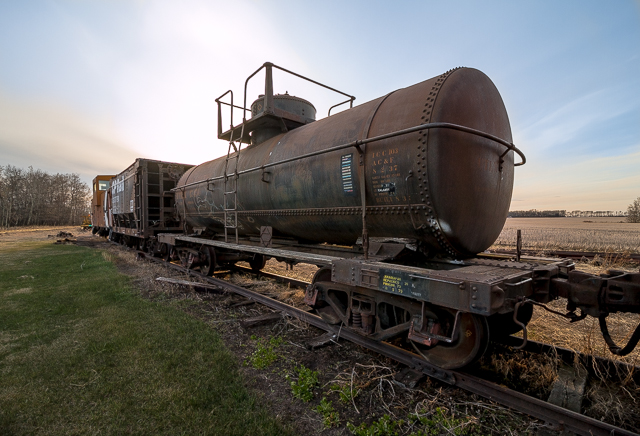
31) A row of historic cars.
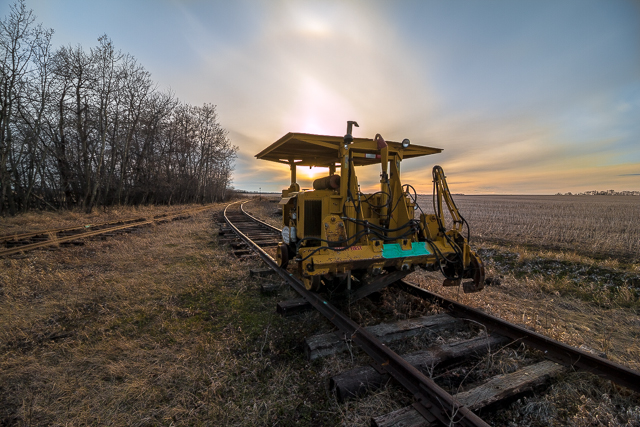
32) For track maintenance.
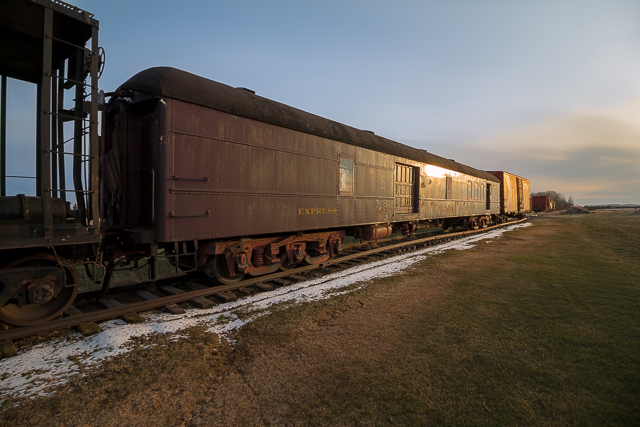
33) A second Mail/Express car.
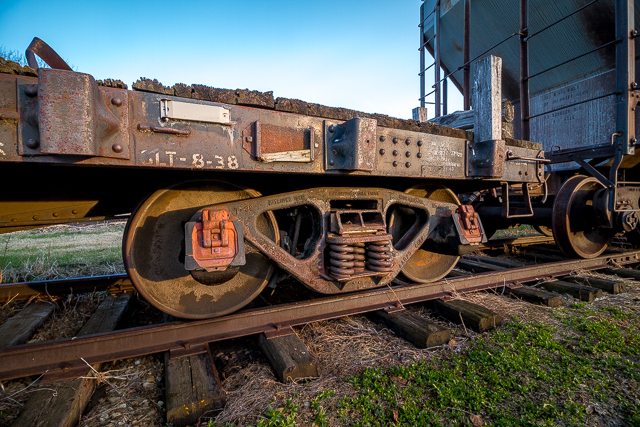
34) Blt-8-38.
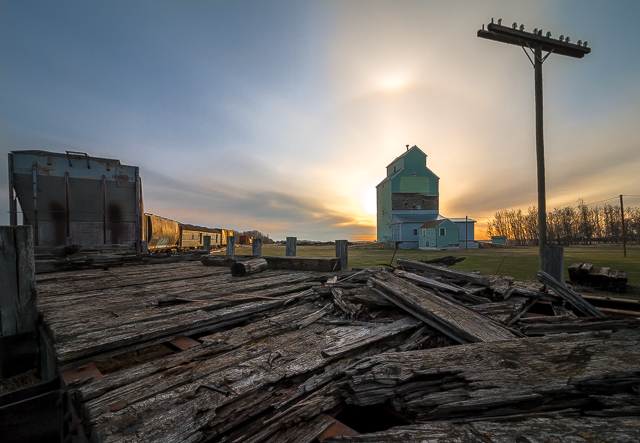
35) The elevator was brought in from a nearby town.
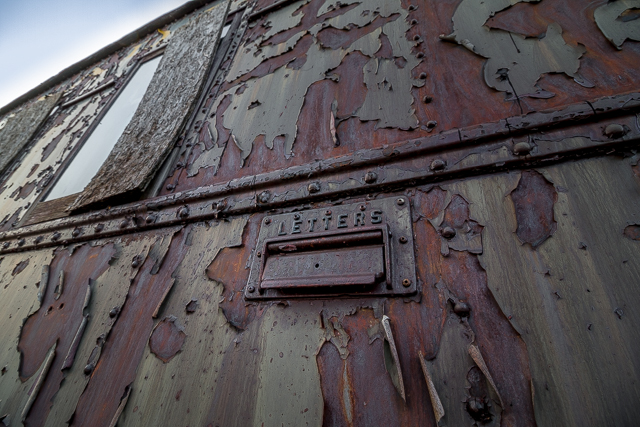
36) A rolling mail box.
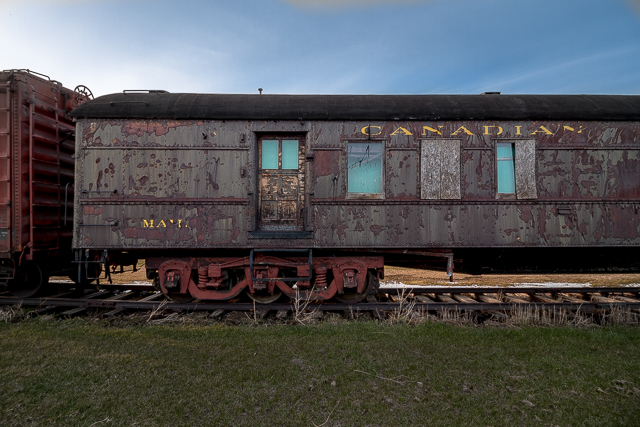
37) Over built.
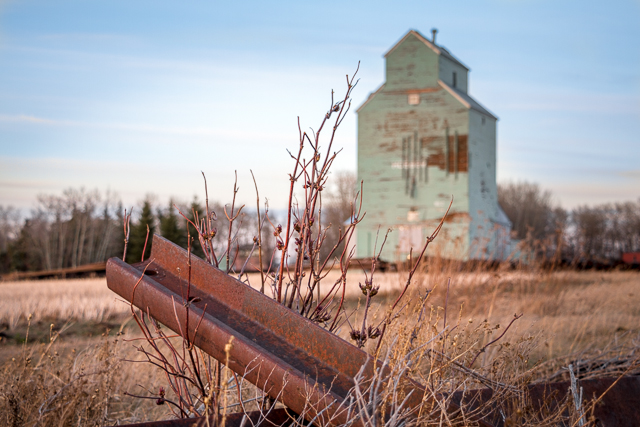
38) Colour tells us it once belonged to the “Pool”.
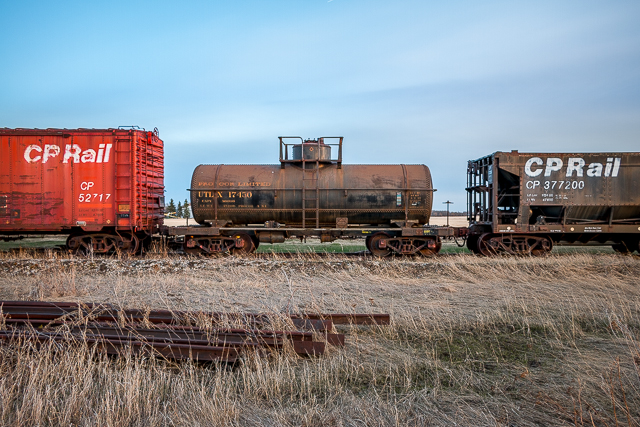
39) On a siding off the loop track.
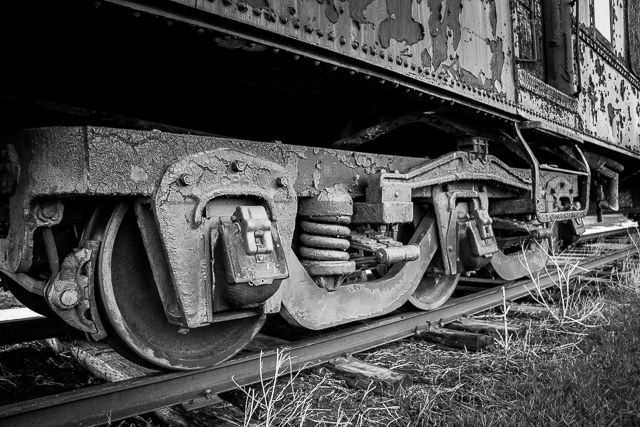
40) Things big and heavy.
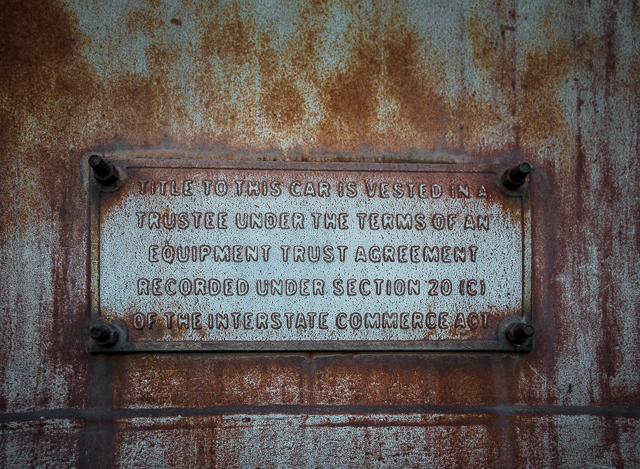
41) “Under the terms of an equipment trust agreement…”
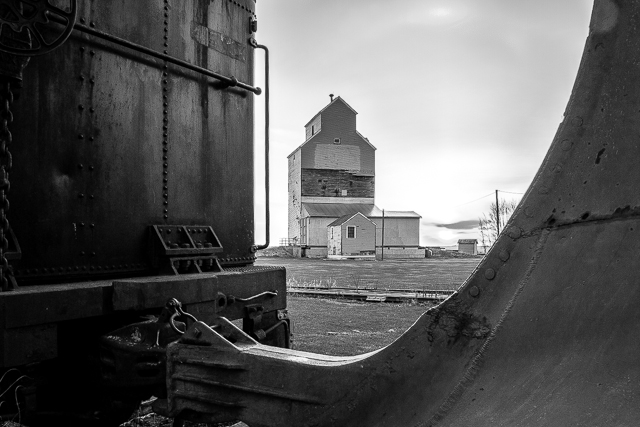
42) One of the oldest in the province.
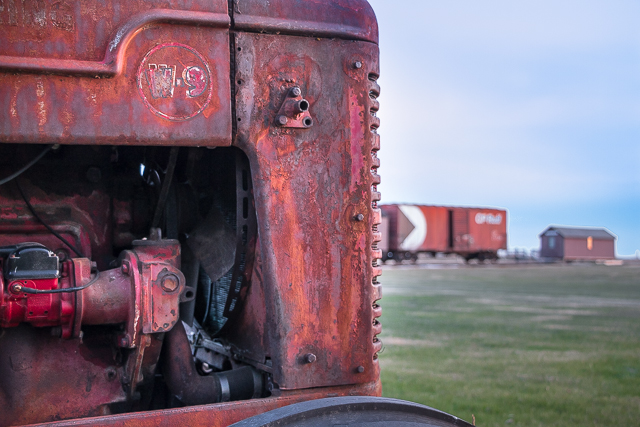
43) View from a W-9.
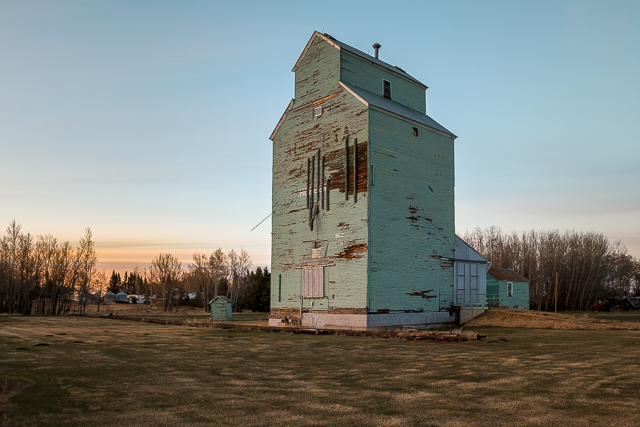
44) It was moved here in the early 2000s.
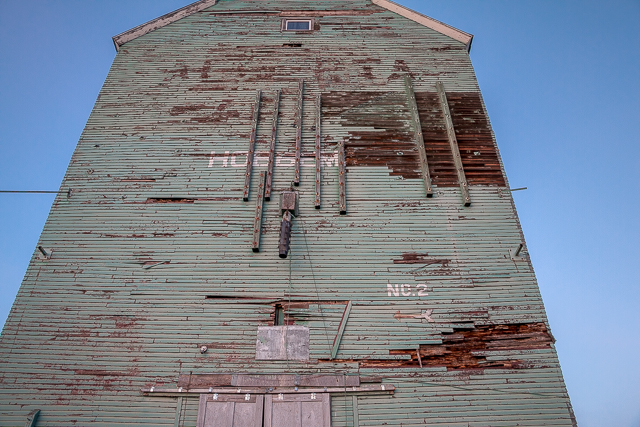
45) From the town of Hobbema (now Maskwacis).
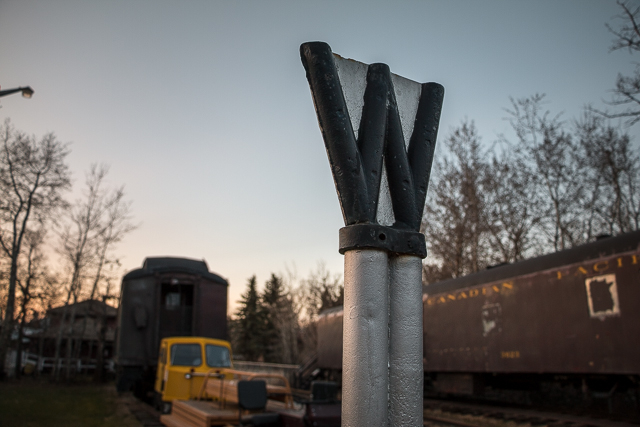
46) See this and whistle
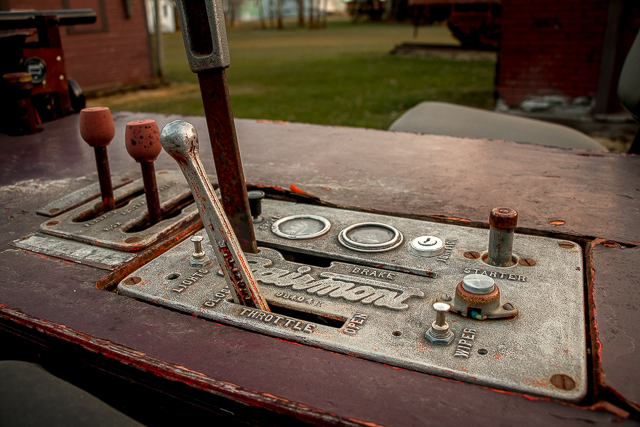
47) Thinking back to Saskatchewan.
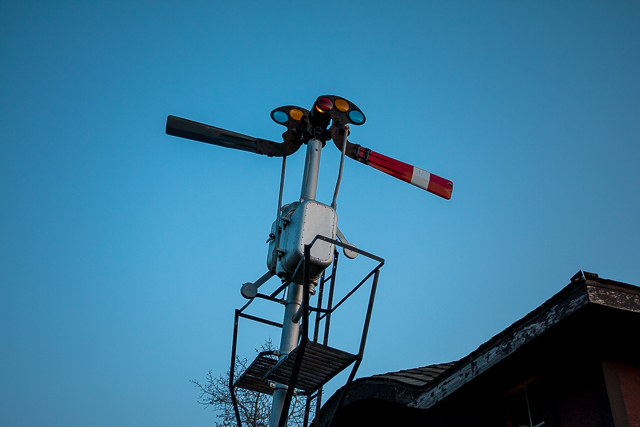
48) Indicates a stop.
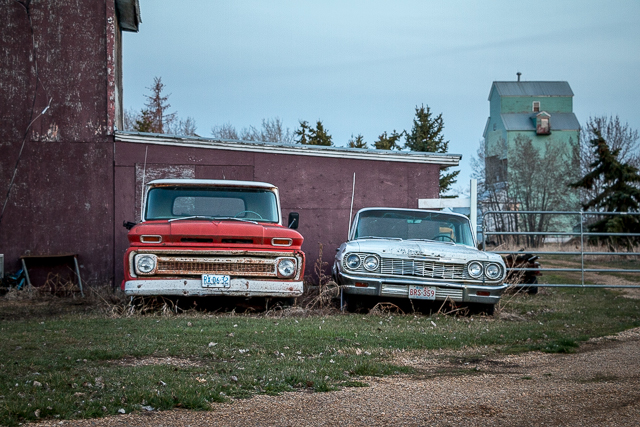
49) In retirement.
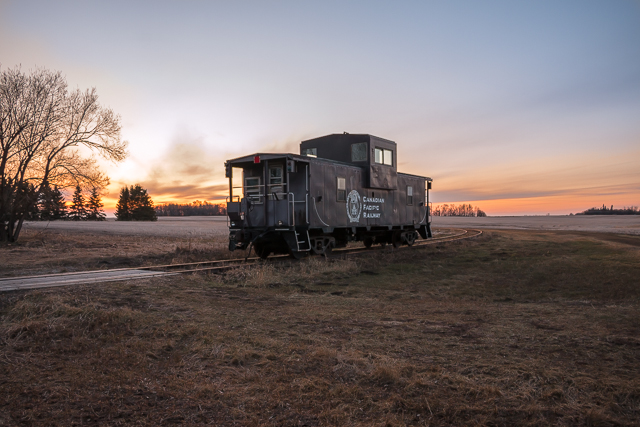
50) North leg of the loop track.
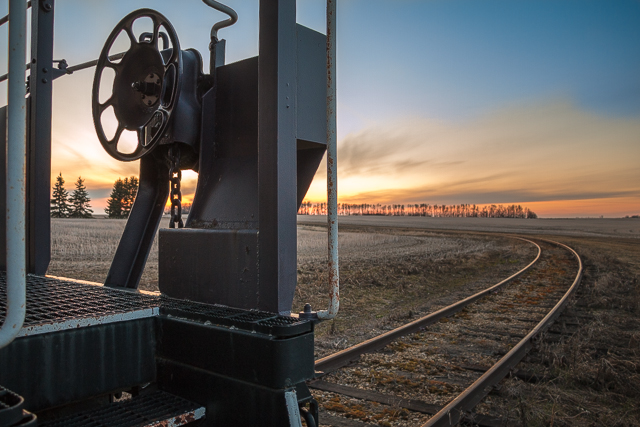
51) Serenaded by coyotes.
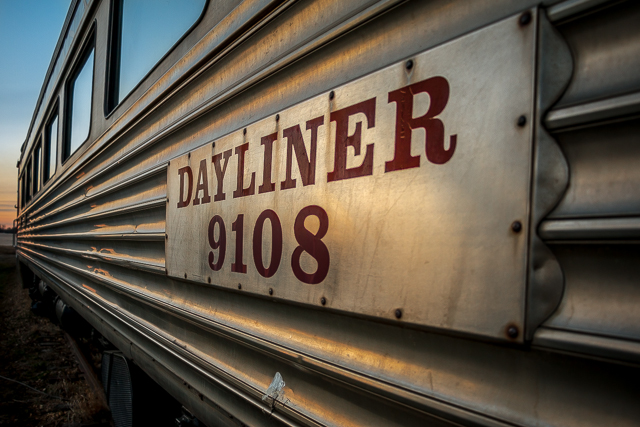
52) For local runs or branchline service.
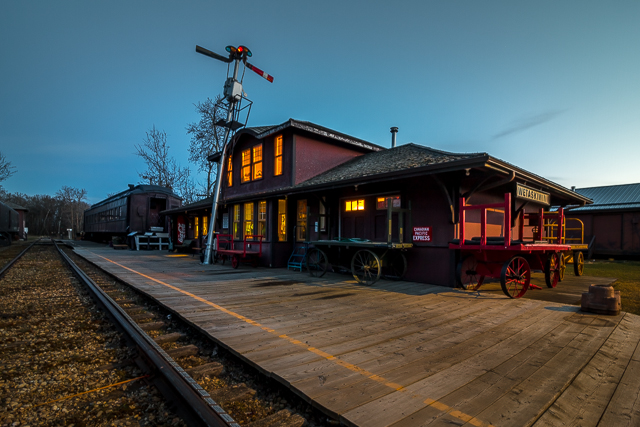
53) Down at the station.
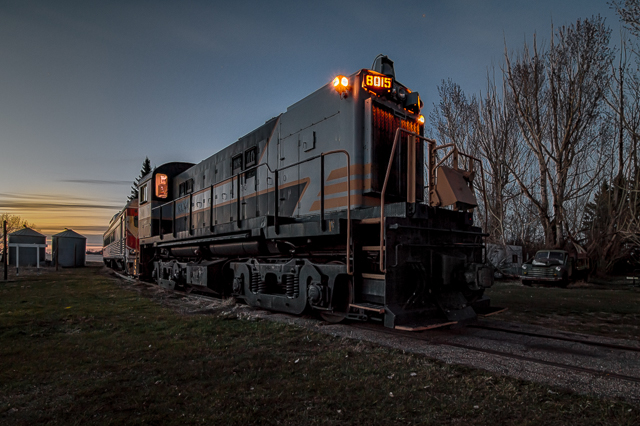
54) A comparative “lightweight”.

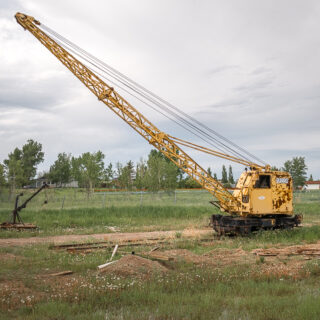
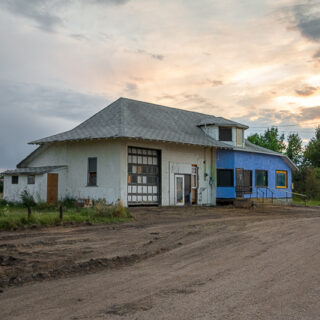
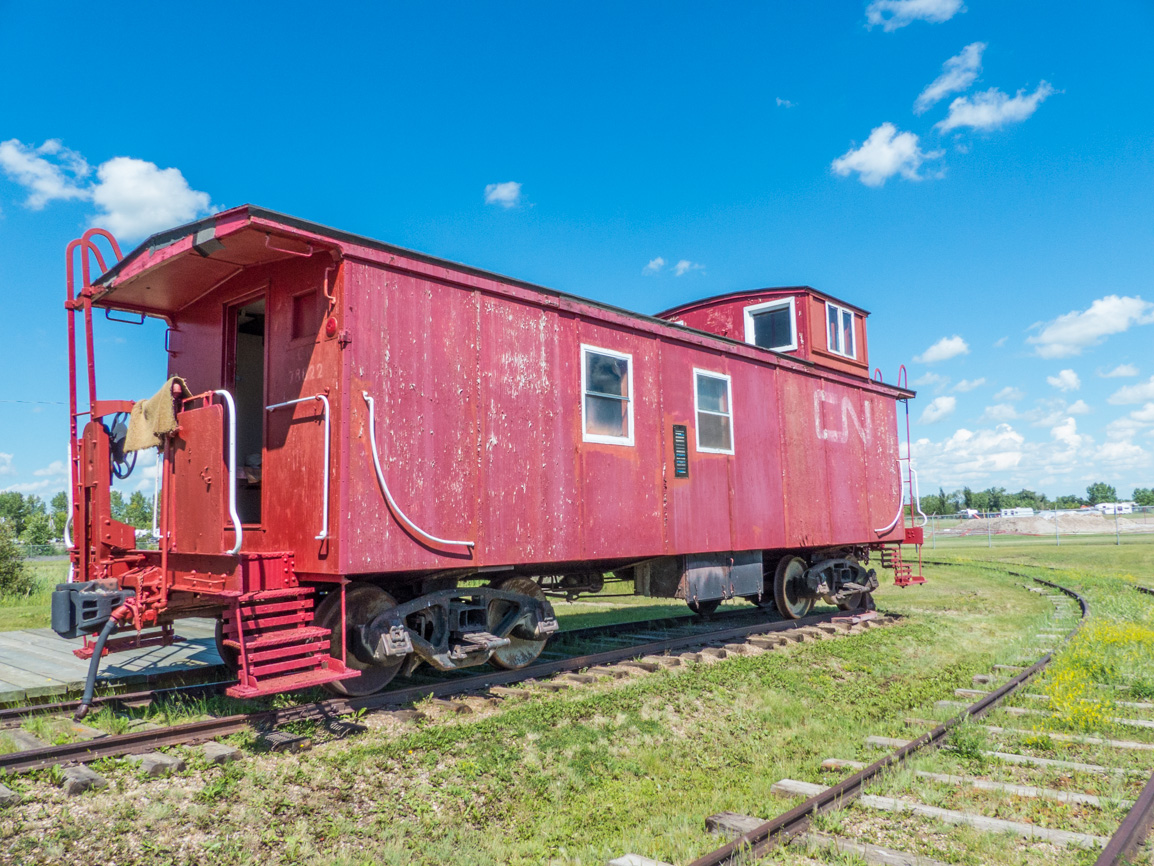
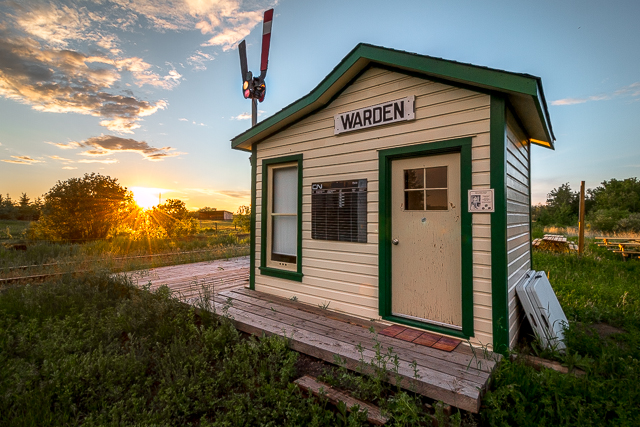
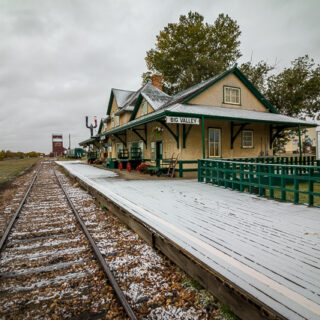
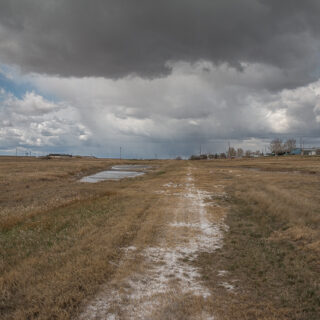
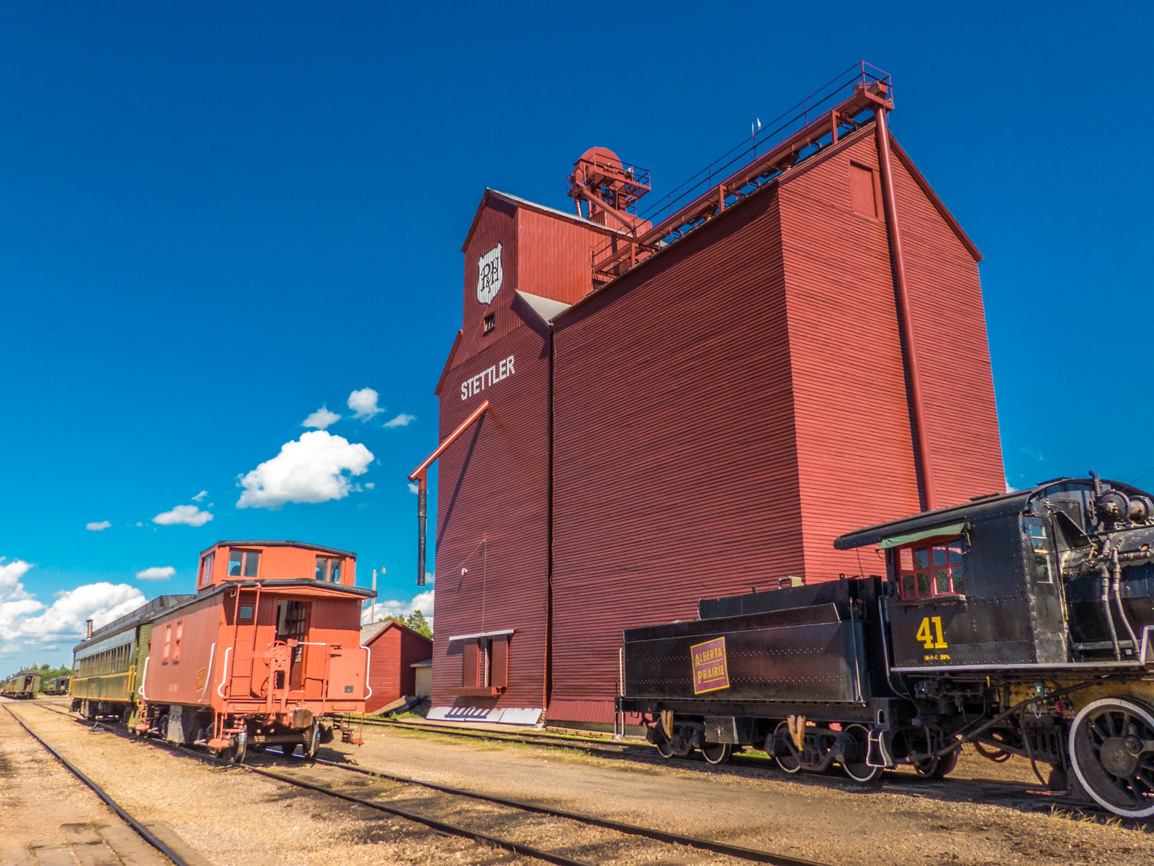
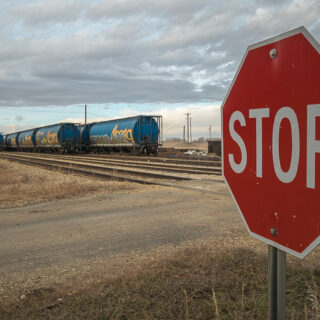
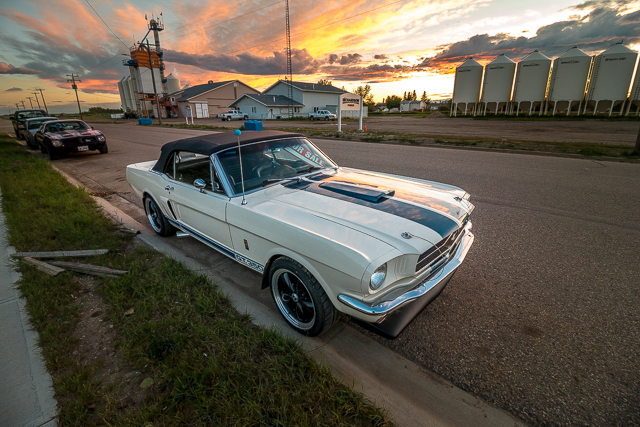
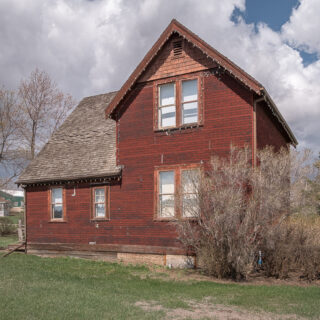
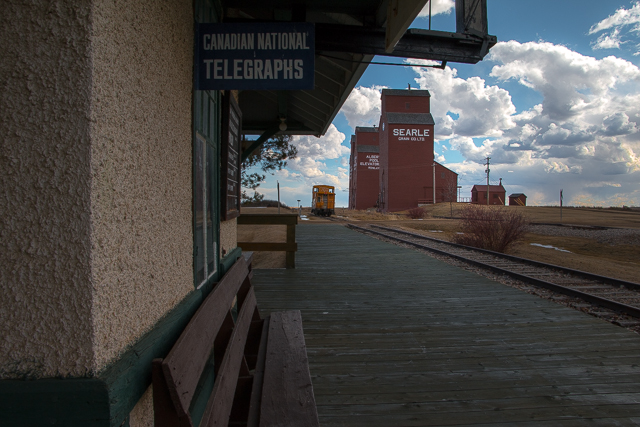
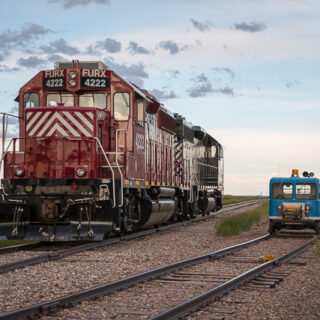







Great photos, was out there myself last weekend. Was a good time and especially chatting with Bill was the highlight (after the train ride of course)…
Bill’s a great fellow and so dedicated and humble. What a fun place to spend an afternoon.
It’s on my to-do list!
You’ll have a good time for sure.
Thanks for this. Chris & Connie do great work…
It’s what we do…and we do it for you. Thanks!
Sweet Pictures!
Why thank you!
Love these old trains!
Been obsessed with them since a kid. Once it’s in your blood…
Great shots Chris and Connie! Nicely done for the ACRM.
Thanks, we so love helping museums. This place was a blast to shoot.
Great photos.
Thank you. The place is a playground for us photographers.
Awesome images
Thank you, we sure had a blast shooting them.
That ex-CPR mail/express car (3552) is a few years younger than the one we have at the Galt Railway Park. Ours was built in 1918 as 3774, though it would be similar to that example at the museum.
You and Connie should come down to the Galt Railway Park and do a writeup as well, similar to this…
Cool! Seems a fair number of those mail/express cars survived. Yes, let’s go in to Galt! Deal!
It’s a (bus) charter to….. Why am I hearing “Twilight Zone” music?
There’s the signpost up ahead. You’ve just crossed over into…
Awesome photo…..I remember these (buses) in the 70’s in Calgary. 🤗
Thanks Sis. Calgary had a huge fleet of Fishbowl Buses, some of which operated till about a half dozen years ago.
I need to go see that Budd car. I think it it might be operational.
It’s cool to see. It partly operational awaiting a hard to find part. In the meantime it’s pulled by a locomotive.
Love it Chris!!
Thanks Ron!
Can you imagine how many people sat on the bus?
I know! Over the years it must have carried ten of thousands, or maybe way more.
Do you know where the memorial plaque was previously located. The CPR installed them in a number of their large stations.
Saskatoon I believe, but some of my notes have gone missing. I fired off an email to the museum to double check.
Hi Chris / Eric, the plaque was located at the CPR station in Edmonton. It was later donated to ACRM once the station was closed.
Right, I had that confirmed by the museum but forgot to do a follow up comment. Thanks for helping!
No problem Chris, glad to help friends out!
Great shots! Thanks to Bill Wilson for having us too!
Some are yours! Pat yourself on the back. Yes, a big thanks to Bill, for accommodating us. And for dinner too!
I love the old CP maroon & grey paint.
Us too. One of the best railway paint schemes ever.
Want to thank Chris and Connie for braving the cold nite air to do their filming we appreciate you taking time to showcase ACRM.
It was our pleasure…and we had a blast! Always love to help organizations such as yours.
(ed: Bill is the driving force behind the museum.)
An awesome place for photography. Lots of photo ops.
You said it! Great place to break out the camera.